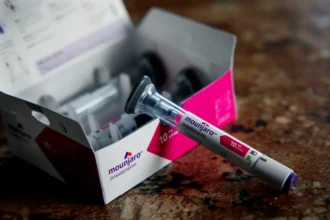In high-speed production environments, where materials like paper, metal, glass, and textiles move rapidly on continuous lines, capturing defects becomes both a technical challenge and a business necessity. Traditional imaging methods often struggle to keep pace with fast-moving sheets, resulting in missed defects, quality issues, and higher rates of waste. This is where line-scan cameras play a transformative role. By capturing images one line at a time rather than a full frame, line-scan cameras offer unique advantages in high-speed environments, ensuring accuracy, speed, and reliable quality control.
This article delves into how line-scan cameras work, the benefits they bring to defect detection in sheet production, and the reasons they are becoming indispensable in industries where precision and speed are critical.
Understanding Line-Scan Camera Technology
Unlike traditional area-scan cameras, which capture a full two-dimensional frame in one snapshot, line-scan cameras capture images one row of pixels (or line) at a time. As the material moves underneath the camera, each line of pixels is captured sequentially, and the image is “built” as a composite of these lines. This line-by-line imaging enables high-speed, high-resolution scans of continuous materials without compromising quality, making line-scan cameras ideal for fast-moving production lines.
How Line-Scan Cameras Work
- Continuous Image Capture: As the material moves past the camera, each line of pixels is captured in quick succession. The camera’s sensor works in conjunction with a motion encoder that synchronizes with the speed of the moving material.
- High-Speed Imaging: Line-scan cameras can capture thousands of lines per second, allowing for incredibly detailed images of fast-moving materials.
- High Resolution: Because images are built line by line, line-scan cameras can capture extremely high-resolution images, down to the micron level. This resolution is essential for detecting minute defects that could otherwise go unnoticed.
In sheet production, where materials may be moving at high speeds and require web inspection across large areas, line-scan technology provides a way to capture consistent, detailed images without slowing down the production line.
The Benefits of Line-Scan Cameras in Fast-Moving Sheet Production
The unique capabilities of line-scan cameras provide a range of benefits that make them ideal for defect detection in high-speed sheet production.
1. High-Speed Detection Without Compromising Quality
One of the primary advantages of line-scan cameras is their ability to capture high-resolution images at high speeds. Traditional area-scan cameras can struggle to maintain image quality at high production speeds because they capture a full frame at once, which often leads to motion blur when the material moves quickly.
With line-scan cameras, images are captured line by line as the material moves continuously under the camera. This allows the system to capture defects in real-time without any blur, ensuring that no defect is missed even when materials move at speeds of several meters per second. This capability is particularly beneficial in industries like:
- Textile Production: For detecting runs, tears, or inconsistencies in fabric patterns.
- Paper and Packaging: For identifying irregularities such as print errors, cuts, or marks.
- Metal Sheets: For spotting surface defects like scratches, dents, or coating inconsistencies.
2. Extremely High Resolution for Micron-Level Defect Detection
In industries with strict quality standards, even the smallest defect can lead to rejection or rework, which can be costly. Line-scan cameras can achieve resolutions that allow for detection at the micron level, making them effective in identifying small defects that area-scan cameras might miss.
The high resolution also allows manufacturers to adjust the level of inspection detail based on their specific needs. For instance, in glass sheet production, a line-scan camera can be configured to detect tiny air bubbles or surface scratches that could compromise the strength or appearance of the final product.
3. Consistent Imaging Over Large Surfaces
Sheet materials, by their nature, often require inspection across wide surfaces that may extend beyond the field of view of traditional cameras. Line-scan cameras solve this problem by offering consistent image quality across the entire width of the sheet, regardless of the size.
Multiple line-scan cameras can be positioned side by side to cover very wide areas without losing resolution or creating gaps in the image. This approach is ideal for applications like:
- Paper Manufacturing: Where entire reels of paper must be checked for discoloration, holes, or other defects.
- Thin Film and Coating: For ensuring uniform thickness, smoothness, and identifying tiny particles or scratches.
With line-scan cameras, manufacturers can be confident that every inch of the material is inspected, which leads to better quality control and reduces the likelihood of defective products reaching the customer.
4. Adaptable to Varying Speeds and Material Types
In sheet production, line speeds can vary based on product type, batch size, or other factors. Line-scan cameras offer the flexibility to adapt to these changes without sacrificing image quality. By synchronizing the camera with the line’s speed using encoders, the system can ensure consistent imaging regardless of production speed.
Moreover, line-scan cameras can be used effectively on various materials, including reflective surfaces like polished metals and transparent materials like glass or plastic films. With the right lighting setup, line-scan cameras can capture detailed images without glare or reflection issues, ensuring accurate defect detection on all types of sheet materials.
Key Applications of Line-Scan Cameras in Sheet Production
The versatility of line-scan cameras makes them suitable for several applications in sheet production where high-speed, high-resolution defect detection is essential.
1. Quality Control in Textiles
In textile production, line-scan cameras can detect faults such as runs, holes, loose threads, and pattern mismatches. These defects can impact the fabric’s usability, and catching them early can prevent costly reworks or customer dissatisfaction.
2. Surface Inspection in Metal Manufacturing
Metal sheet production requires consistent quality across large areas. Line-scan cameras can detect imperfections like scratches, dents, and coating irregularities, which could weaken the material or cause issues during further processing. They are also valuable in inspecting complex patterns on surfaces, which are common in automotive and aerospace applications.
3. Inspection in Glass and Plastic Film Production
The transparency and reflective properties of glass and plastic films pose challenges for traditional imaging systems. Line-scan cameras, in conjunction with carefully configured lighting setups, can effectively inspect these materials for cracks, inclusions, bubbles, and thickness variations. This capability is crucial in applications where clarity and uniformity are vital, such as in touchscreen manufacturing or packaging.
4. Ensuring Print Quality in Packaging
Packaging materials, especially those with text or graphic prints, require consistent print quality. Line-scan cameras can inspect entire sheets for print misalignment, ink spots, or missing elements, ensuring that only packaging with clear and accurate graphics reaches the end user.
Optimizing Line-Scan Camera Performance in Defect Detection
While line-scan cameras offer significant advantages, optimizing their performance requires careful attention to a few key factors:
Lighting Configuration
Proper lighting is essential to enhance defect visibility. Brightfield, darkfield, and backlighting are commonly used techniques that can be customized based on the material type. For reflective surfaces, polarized lighting may reduce glare, while diffuse lighting can help reveal inconsistencies on textured materials.
Synchronization with Line Speed
Achieving precise synchronization with the production line is critical to avoid distorted or incomplete images. Encoders can be used to match the camera’s capture rate with the line speed, ensuring that each line of pixels corresponds accurately with the movement of the material.
Data Processing and Analysis
High-resolution line-scan images produce large amounts of data, which must be processed in real-time to avoid delays. Edge computing, which enables data processing at the inspection site, can reduce latency and ensure that defect detection is immediate. Machine learning algorithms can further enhance defect detection by identifying subtle patterns or inconsistencies that might not be immediately obvious.
Line-scan cameras have revolutionized defect detection in high-speed sheet production, providing a reliable solution for industries that demand both speed and precision. With their ability to capture high-resolution images line by line, line-scan cameras ensure comprehensive inspection of sheet materials, identifying even the smallest defects without interrupting production flow.
As manufacturing standards continue to rise and automation becomes increasingly sophisticated, line-scan cameras will remain a critical technology for quality control in fast-moving sheet production environments. By implementing these advanced imaging systems, manufacturers can improve product quality, reduce waste, and build stronger customer trust through consistent and precise defect detection.

















